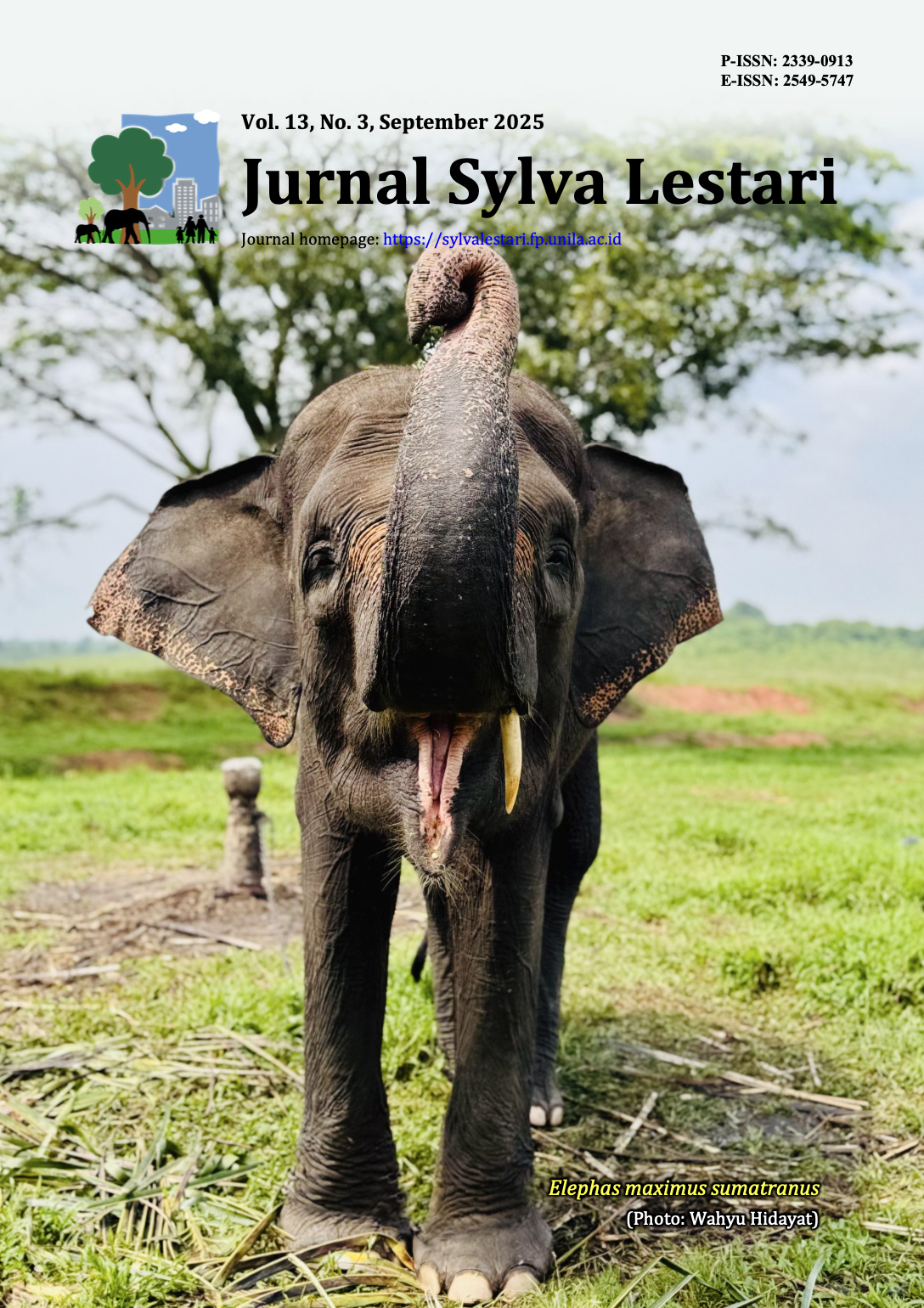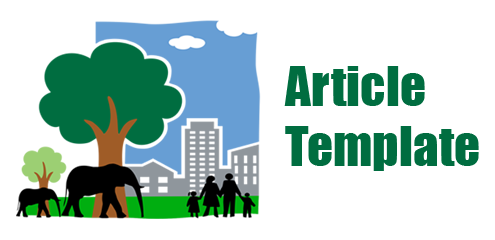Community Structure of Mangrove Species in Bagakay Trail Lagoon, Claver, Surigao del Norte, Philippines
DOI:
https://doi.org/10.23960/jsl.v13i3.1193Abstract
Mangroves are highly valuable ecosystems that provide essential goods and services, including stabilizing coastlines, regulating water, supporting fisheries, and sequestering carbon. This study assessed the community structures of mangroves in Bagakay Trail Lagoon, Claver, Surigao del Norte. Four sampling stations with transect lines ranging from 150–200 m laid perpendicular to the shoreline were established. Additionally, five plots, each measuring 10 m × 10 m, were established at each station, with an interval of 20–30 m between plots. The mangrove leaf specimens were collected for proper identification of species. The study’s results identified thirteen mangrove species classified under nine families, all of which were categorized as least concern species based on the International Union for Conservation of Nature. The species diversity of the sampling area falls under very low diversity (H'=0.852), which may be attributed to anthropogenic activities and the recent typhoon Rai, which devastated the area. The most ecologically important species were Avicennia officinalis and Nypa fruticans, with high importance values suggesting their dominance and significant influence on the ecosystem. It is recommended that both government and non-government organizations implement site-specific conservation interventions to improve species diversity and ensure the sustainability of the mangrove ecosystem.
Keywords: community structure, diversity indices, habitat assessment, mangroves, vegetation analysis
Downloads
Downloads
Published
How to Cite
Issue
Section
Statistics
 Abstract views: 215 times
Abstract views: 215 times PDF downloaded: 136 times
PDF downloaded: 136 times
Metrics
License
Copyright (c) 2025 Wegie Bernales, Faye Angela Dingding Guiritan, Crystal Jane Lopez Pecato, Joel Andig Mercado, Jennifer Aquino Tangonan, Laurence Buque Calagui, Victor Lobrigas Corbita

This work is licensed under a Creative Commons Attribution-NonCommercial 4.0 International License.
Authors retain copyright and grant the journal right of first publication with the work simultaneously licensed under a Creative Commons Attribution-NonCommercial 4.0 Licence that allows others to share the work with an acknowledgement of the work's authorship and initial publication in this journal.
Authors are able to enter into separate, additional contractual arrangements for the non-exclusive distribution of the journal's published version of the work (e.g., post it to an institutional repository or publish it in a book), with an acknowledgement of its initial publication in this journal.
Authors are permitted and encouraged to post their work online (e.g., in institutional repositories or on their website) prior to and during the submission process, as it can lead to productive exchanges, as well as earlier and greater citation of published work (See The Effect of Open Access).









